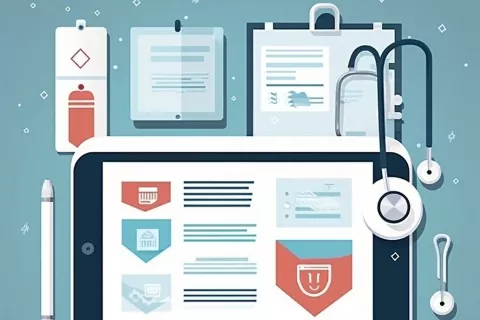In Vitro Diagnostic (IVD) devices play a crucial role in healthcare by providing valuable information for disease diagnosis, patient monitoring, and treatment decisions. The European Union's In Vitro Diagnostic Regulation (IVDR) 2017/746 introduced a new classification system for IVDs. This classification system groups devices based on their level of risk, similar to the classification system under the EU Medical Device Regulation (EU MDR) 2017/745.
EU IVDR Classification System Overview
Annex VIII in the EU IVDR 2017/746 lays out a detailed classification rules basing on which the IVD manufacturers would require to classify their products and conform to the Regulatory roadmap accordingly. As per the classification system, the IVDs are categorized into four (04) classes based on the risk level: -
- Class A: Devices with minimal risk, such as general laboratory reagents, basic sample collection devices, and general-purpose software, fall into this category. These devices are subject to the basic requirements of the regulation.
- Class B: Devices with moderate risk that are used for the detection of follicle stimulating hormone (FSH) or unassayed controls with unassigned quantitative or qualitative values belong to this class. These devices undergo a higher level of scrutiny, including conformity assessment by a Notified Body (NB).
- Class C: Devices with higher risks, including those used for cancer diagnostics or determining the compatibility of blood or tissue, fall into this category. They require a thorough assessment and conformity assessment by a Notified Body (NB).
- Class D: Devices with the highest potential risk, such as detecting the presence of or exposure to a transmissible agent responsible for a life-threatening disease with a significant or suspected high risk of spreading, are classified under Class D. These devices undergo the most stringent Regulatory scrutiny, including a full assessment by a Notified Body (NB).
The IVDR also introduced the concept of reclassification for existing IVD devices. IVD manufacturers may need to reassess the classification of their devices based on the new classification rules outlined in the regulation.
Key Points to Remember While Classifying Your Devices
- Determine the Intended Purpose: The first step is to identify the In Vitro Diagnostic (IVD) device's intended use. The target demographic for the device's intended use as well as its diagnostic, monitoring, or screening function, must be identified.
- Identify the Features and Risks of the Device: Assess the device's attributes and usage dangers. Think about aspects like invasiveness, the ability to detect physiological or pathological processes, and other pertinent characteristics.
- Review the IVDR Classification Rules: Take note of the seven (07) detailed classification rules provided in the EU IVDR's Annex VIII. The MDCG has provided a detailed guidance document on the classification rules under the EU IVDR 2017/746 for IVDs. This guidance document offers specific examples to aid in categorizing IVD devices according to their intended use and risks. The classification criteria considers several factors, including the device's use, degree of invasiveness, measuring parameters, and more.
- Apply the Classification Criteria: Choose the appropriate risk class (A, B, C, or D) for the IVD device based on the intended use, attributes, and classification rules. Using the criteria outlined in the IVDR, classify the device using the highest risk category that applies.
In conclusion, the classification of IVD devices under the EU IVDR 2017/746 establishes a framework for the assessment and regulation of these devices. Manufacturers must carefully consider the intended purpose, device characteristics, and associated risks to assign the appropriate risk class. By adhering to the classification rules, manufacturers can navigate the Regulatory landscape, meet the necessary requirements, and bring safe and effective IVD devices to the market.
Freyr can help you navigate through these obstacles and assist you in successfully launching your devices in the EU Market. Schedule a meeting with us to learn more! Stay informed. Stay compliant.










